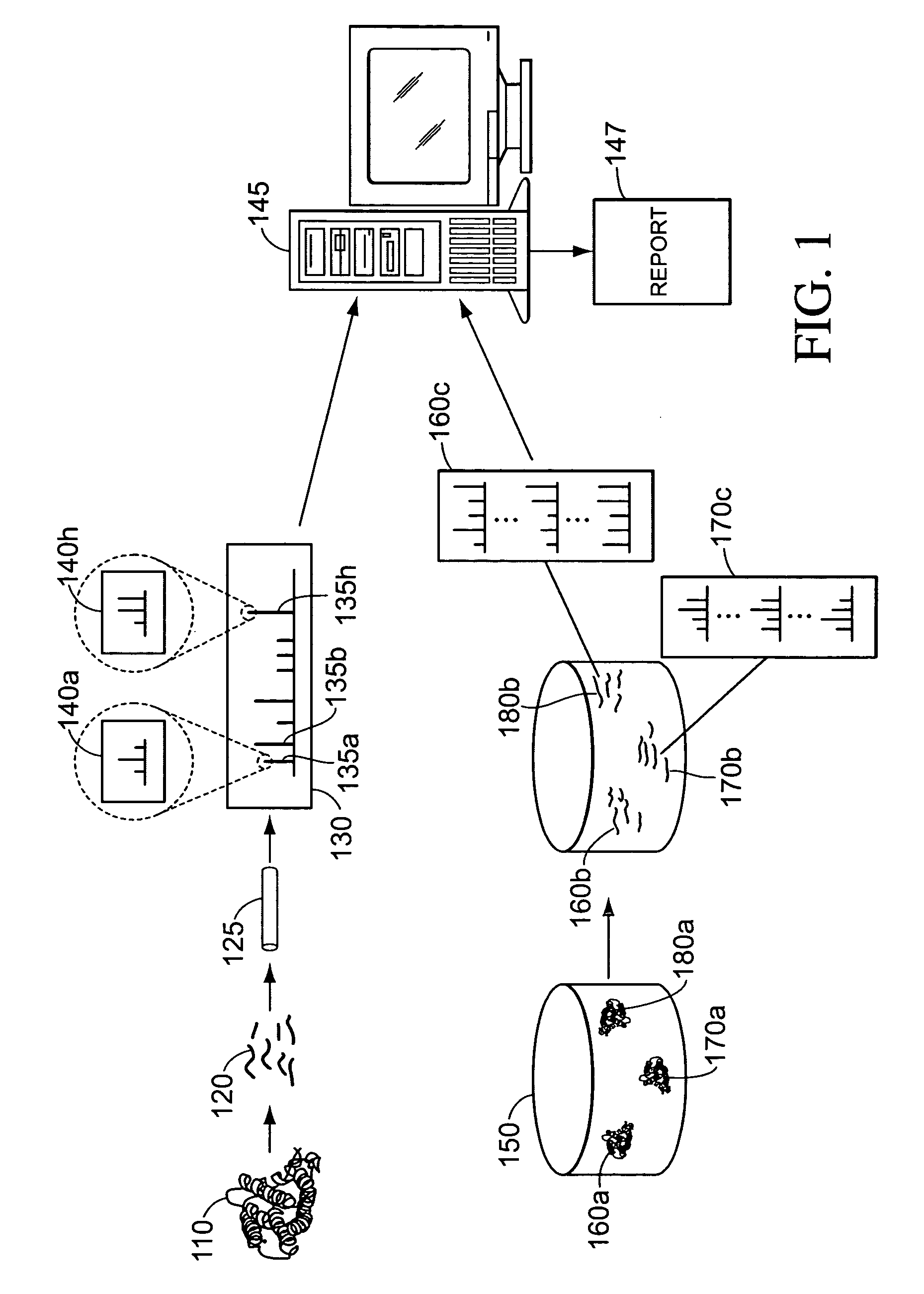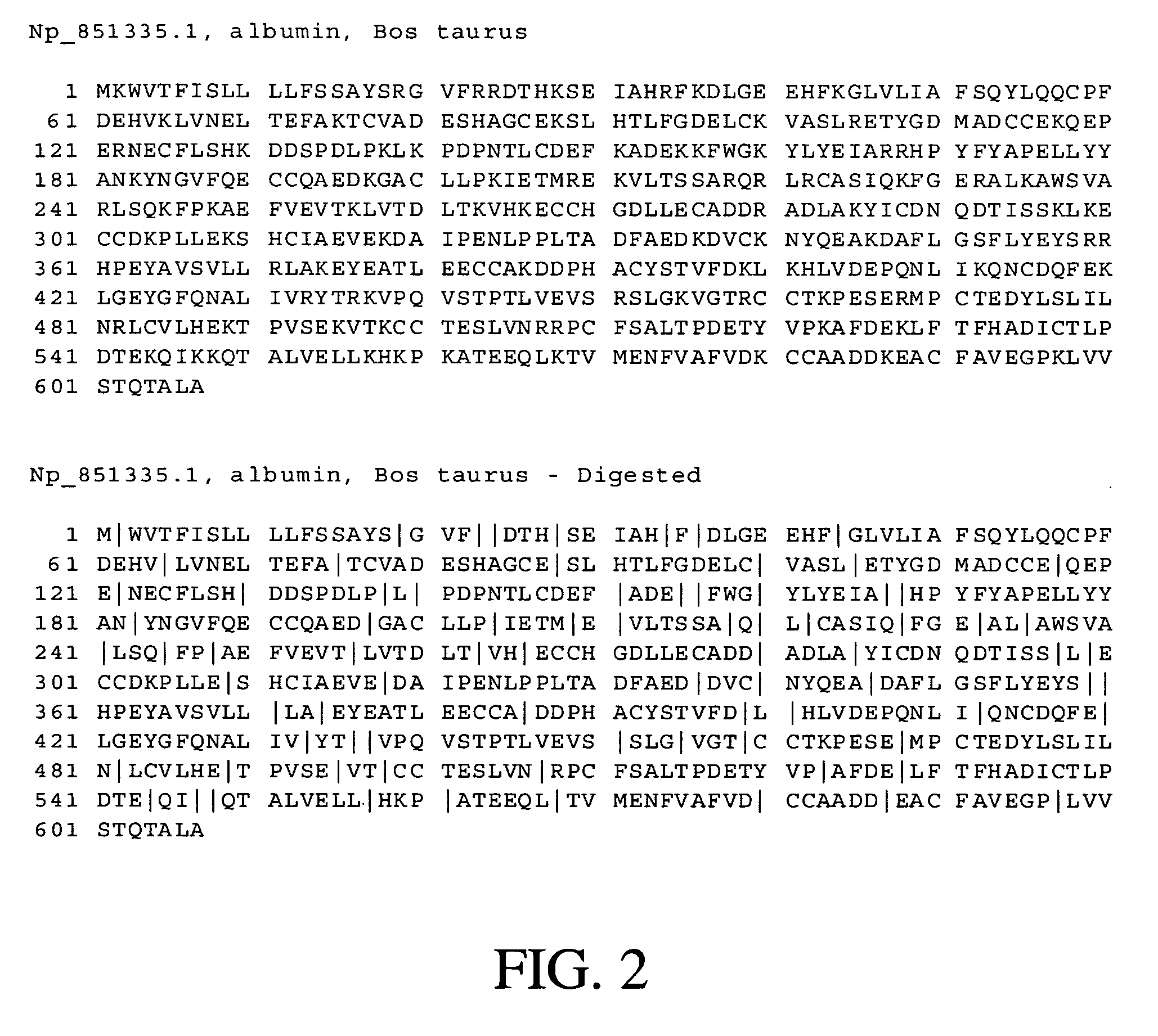Methods and systems for protein and peptide evidence assembly
a protein and peptide technology, applied in the field of methods and systems for protein and peptide evidence assembly, can solve the problems of tedious comparison, large number of database entries, and uncertainty at the protein level, and achieve the effect of reducing manual examination of protein lists
- Summary
- Abstract
- Description
- Claims
- Application Information
AI Technical Summary
Benefits of technology
Problems solved by technology
Method used
Image
Examples
example 1
One Protein, No Shared Proteins
[0048]
Protein A(no sharing)LRNDGSLMYQQVPMVEIDGMJNDGSLMYQQVPMVEIDGMJYFPAFEJ
example 2
Winner and Uncompetitive Subset Protein
[0049]
Protein AProtein BCCTESLVNR (99%)=CCTESLVNR (99%)DAFLGSFLYEYSR (99%)=DAFLGSFLYEYSR (99%)DAIPENLPPLTADFAEDJDVCJ (99%)ECCDJPLLEJ (99%)LGEYGFQNAILVR (99%)LJECCDJPLLEJ (93%)
example 3
Two Equivalent Proteins
[0050]
Protein AProtein BEEIFGPVQQIMJ (97%)=EEIFGPVQQIMJ (97%)ELGEYGFHEYYEVJ (99%)=ELGEYGFHEYYEVJ (99%)ILDLIESGJ (97%)=ILDLIESGJ (97%)ILDLIESGJJ (9%)=ILDLIESGJJ (9%)JFPVFNPATEEJ (99%)=JFPVFNPATEEJ (99%)LADLIER (5%)=LADLIER (5%)LCEVEEGDJEDVDJ (99%)=LCEVEEGDJEDVDJ (99%)QAFQIGSPWR (99%)=QAFQIGSPWR (99%)
PUM
| Property | Measurement | Unit |
|---|---|---|
| confidence threshold | aaaaa | aaaaa |
| peptide threshold | aaaaa | aaaaa |
| peptide threshold | aaaaa | aaaaa |
Abstract
Description
Claims
Application Information
 Login to View More
Login to View More - R&D
- Intellectual Property
- Life Sciences
- Materials
- Tech Scout
- Unparalleled Data Quality
- Higher Quality Content
- 60% Fewer Hallucinations
Browse by: Latest US Patents, China's latest patents, Technical Efficacy Thesaurus, Application Domain, Technology Topic, Popular Technical Reports.
© 2025 PatSnap. All rights reserved.Legal|Privacy policy|Modern Slavery Act Transparency Statement|Sitemap|About US| Contact US: help@patsnap.com



